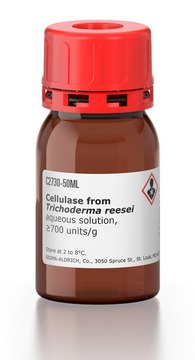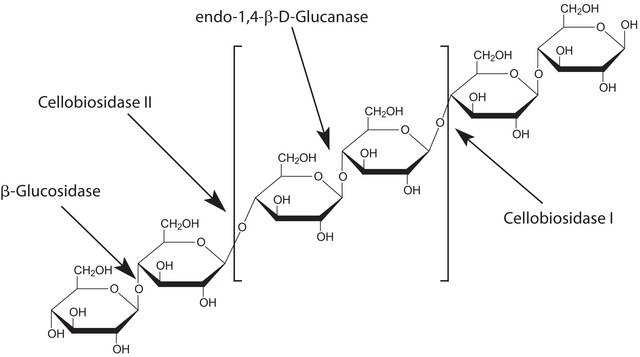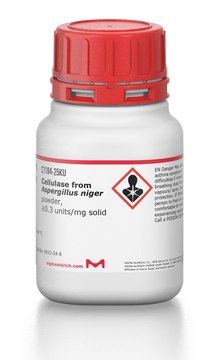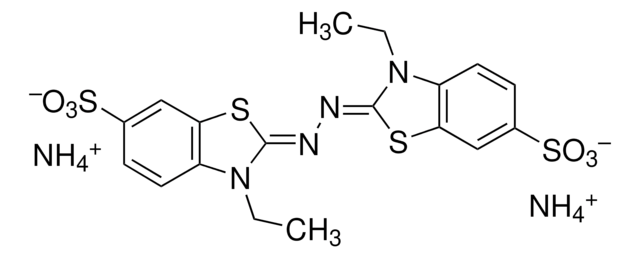C6105
Cellobiase from Aspergillus niger
liquid, ≥250 units/g
Recommended Products
form
liquid
specific activity
≥250 units/g
greener alternative product characteristics
Waste Prevention: Greener alternative product characteristics
Learn more about the Principles of Green Chemistry.
greener alternative category
storage temp.
2-8°C
General description
Application
Legal Information
Signal Word
Danger
Hazard Statements
Precautionary Statements
Hazard Classifications
Resp. Sens. 1
WGK
WGK 1
Flash Point(F)
Not applicable
Flash Point(C)
Not applicable
Regulatory Information
Certificates of Analysis (COA)
Search for Certificates of Analysis (COA) by entering the products Lot/Batch Number. Lot and Batch Numbers can be found on a product’s label following the words ‘Lot’ or ‘Batch’.
Already Own This Product?
Find documentation for the products that you have recently purchased in the Document Library.
Which document(s) contains shelf-life or expiration date information for a given product?
If available for a given product, the recommended re-test date or the expiration date can be found on the Certificate of Analysis.
How do I get lot-specific information or a Certificate of Analysis?
The lot specific COA document can be found by entering the lot number above under the "Documents" section.
How do I find price and availability?
There are several ways to find pricing and availability for our products. Once you log onto our website, you will find the price and availability displayed on the product detail page. You can contact any of our Customer Sales and Service offices to receive a quote. USA customers: 1-800-325-3010 or view local office numbers.
What is the Department of Transportation shipping information for this product?
Transportation information can be found in Section 14 of the product's (M)SDS.To access the shipping information for this material, use the link on the product detail page for the product.
What is the unit definition of Cellobiase, Product C6105?
One unit of cellobiase activity (CBU) is defined as 2 μmole of glucose produced per minute at 40°C, pH 5.
What is the density of Cellobiase, Product C6105?
The density of this enzyme solution is approximately 1.2 g/mL.
What is the recommended dosage for Cellobiase, Product C6105?
The manufacturer's recommended dosage is 0-5%. That is, the enzyme solution should be be used at an enzyme:substrate (w:w) ratio of at least 1:20.
My question is not addressed here, how can I contact Technical Service for assistance?
Ask a Scientist here.
Our team of scientists has experience in all areas of research including Life Science, Material Science, Chemical Synthesis, Chromatography, Analytical and many others.
Contact Technical Service




